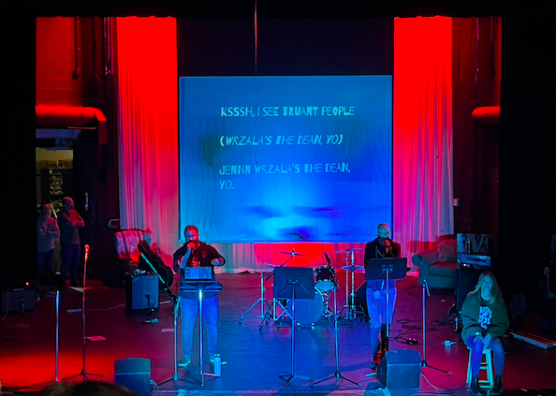Texas infrastructure collapse leads to speculation on fossil fuels
March 3, 2021
On the morning of Feb. 12, winter storm Uri wreaked havoc across the Midwest and Northeast states. Out of all the states, Texas, who had rarely received heavy snowfall, was the most affected by the dramatic change in climate. The snow storm completely wiped out 40 percent of the power supply in Texas, and caused water disruptions for 1.4 million Texas residents. As of Feb. 28, around 50 people have passed away, and the reality of the amount of damage caused by this massive snow storm strikes a nerve in many Americans.
The Texas winter crisis affected around 4.5 million homes and businesses. Families in Texas experienced the harsh reality of living without heat, water, or electricity for days on end and some even weeks. While battling the freezing temperatures and fear of lacking clean water, residents also had to deal with unresponsive credit and debit card readers, making cash the only available currency.
As people were introduced to this new situation, inexperience led to some people making the mistake of keeping warm in a closed garage with their car on. These victims of inexperience tragically passed away from carbon monoxide poisoning. Many activists blamed the unprepared Texas gas-based powered infrastructure as the cause of these outages, claiming that the deaths from this storm were preventable.
As many grocery stores ran out of supplies, temperatures dropped below freezing in some homes. Schools in the middle of reopening were also forced to shut down, as online classes were impossible and there was no electricity in the schools. The daily lives of many Texas residents became chaotic.
Despite the desperate situation, many Texans huddled around their fireplaces and bundled themselves in blankets. Heat shelters provided warmth for those in need of shelter, and local organizations provided food and clean water.
People were outraged at the damage the storm caused. In the midst of the dire power outages, Texas Senator Ted Cruz left on a trip to Cancun, Mexico. On the way to his flight, he was seen sharing pictures and videos of his trip despite many Texans finding themselves lacking power back home He later stated that he was merely dropping off his kids and wife and returning straight back to Texas.
However, leaked texts from his wife’s group chat tell the opposite, showing that the trip to Cancun wasn’t so spur of the moment. In fact, on the 26th, during his CPAC speech, Cruz joked about his trip to Cancun.
“Orlando is awesome! It’s not as nice as Cancun, but it’s nice” said Cruz.
With much evidence, it’s clear that Ted Cruz packed up and flew to Cancún, Mexico.
Some Texans were infuriated witnessing their senator treating the ordeal lightly and covering his actions. One Twitter user commented on Ted Cruz’s actions.
“I live deep in the heart of Texas and this should piss everyone off. People are freezing, starving, worried about clean water and he leaves for a beach vacation?” said the user.
Senator Cruz later excused his actions in a tweet and stated that he and his team are using all their resources to keep Texans informed and safe.
Out of all the chaos and losses, questions about the cause of Texas’s failure to prevent the outages and deaths have arisen. As tensions rose, some pointed to Texas infrastructure as the cause of the outages and growing death toll.
Texas generates 60 percent of its electricity by burning natural gas. As a result of the storm, temperatures dropped causing the pipelines delivering natural gas to depressurize and freeze. The ERCOT was unprepared, since Texas generally receives little to no snow. As a result, the system lacked the power to heat all houses, so it failed.
During normal outages, the limited power supply is rotated, so that everyone receives electricity in even portions. In this outage, power supplies were not rotating like normal, since key facilities like hospitals needed power.
The Atlantic called the Texas infrastructure a multisystem failure. Pipes burst from the frigid weather, contaminating the water supply. Cell networks went down, preventing people from calling 911. Local governments, cities, and private electricity companies have all continuously diverted the blame, claiming that bad weather was unpredictable. However, in previous years experts and activists have all warned about the danger of this exact type of infrastructure collapse.
The system’s failure links back to the lack of planning and the reliance on immediate responsive logistics.
During the chaos, electricity prices rose. The fortunate Texan families that did not lose power received very hefty electricity bills as a result of the loss of clientele. In some cases, people were charged $6,000-$17,000 per month for electricity bills, in contrast to previous rates that were priced at $100-140 per month. Governor of Texas Greg Abbot, later proposed an investigation of the increased prices, and stated that the residents who were charged with these prices will not need to pay.
Officials like Abbot and Cruz also went on talk shows such as Sean Hannity and other news channels and explained the situation. Officials claimed that fossil fuels were more reliable and more necessary than renewable energy during this crisis.
A senior director at ERCOT (Electric Reliability Council of Texas) replied, and stated that renewable energy lost the least amount of power during the Uri storm, contrary to the claims of Governor Abbot.
Power has since been restored to almost everyone in the state, though nearly 4000 people are still waiting for power as of Feb. 28, according to PowerOutage.us. The American economy and way of life has been disrupted and changed through this crisis. The crisis has affected Texan jobs, families, and lifestyles. The incident has caused loss for many, spotlighted multiple politicians, and raised questions on the natural gas based infrastructure. Despite these problems Texas is recovering and has begun its bounce back from this crisis. Plans have been announced and action has been taken to prevent such incidents from repeating.



